
The front raise is an isolation exercise that primarily targets your anterior (front) deltoid muscles. In this exercise, you simply lift weights up in front of your body, until they reach shoulder height. It is normally performed using dumbbells, but you can also do front raises with barbells or resistance bands.
Jump to
Isolation exercise for your anterior (front) delts
Training your shoulders means working your deltoid muscles. Your deltoids are a muscle group made up of three muscles - the anterior (front) deltoid, the lateral (side) deltoid and the posterior (rear) deltoid.
Other shoulder exercises like lateral raises and the overhead press target your shoulders, but do not specifically target your front deltoids. The lateral raise primarily targets your lateral (side) deltoids, while the overhead press is a compound movement that also hits your triceps and upper pecs.
It's debatable whether you need a specific isolation exercise for your front delts in your workout routine. They do get indirectly worked by many compound chest exercises. But if you really develop your front delts further, it's a good idea to add an isolation exercise to your routine.
Muscle worked - Anterior (front) deltoid
Your anterior deltoids, also known as front deltoids, are one of three parts of your deltoid muscles. They are located at the front of your shoulder and are engaged when you move your arm upward in front of your body. Strengthening your front deltoids can improve your shoulder stability and enhance your performance in everyday pushing, lifting or throwing movements.
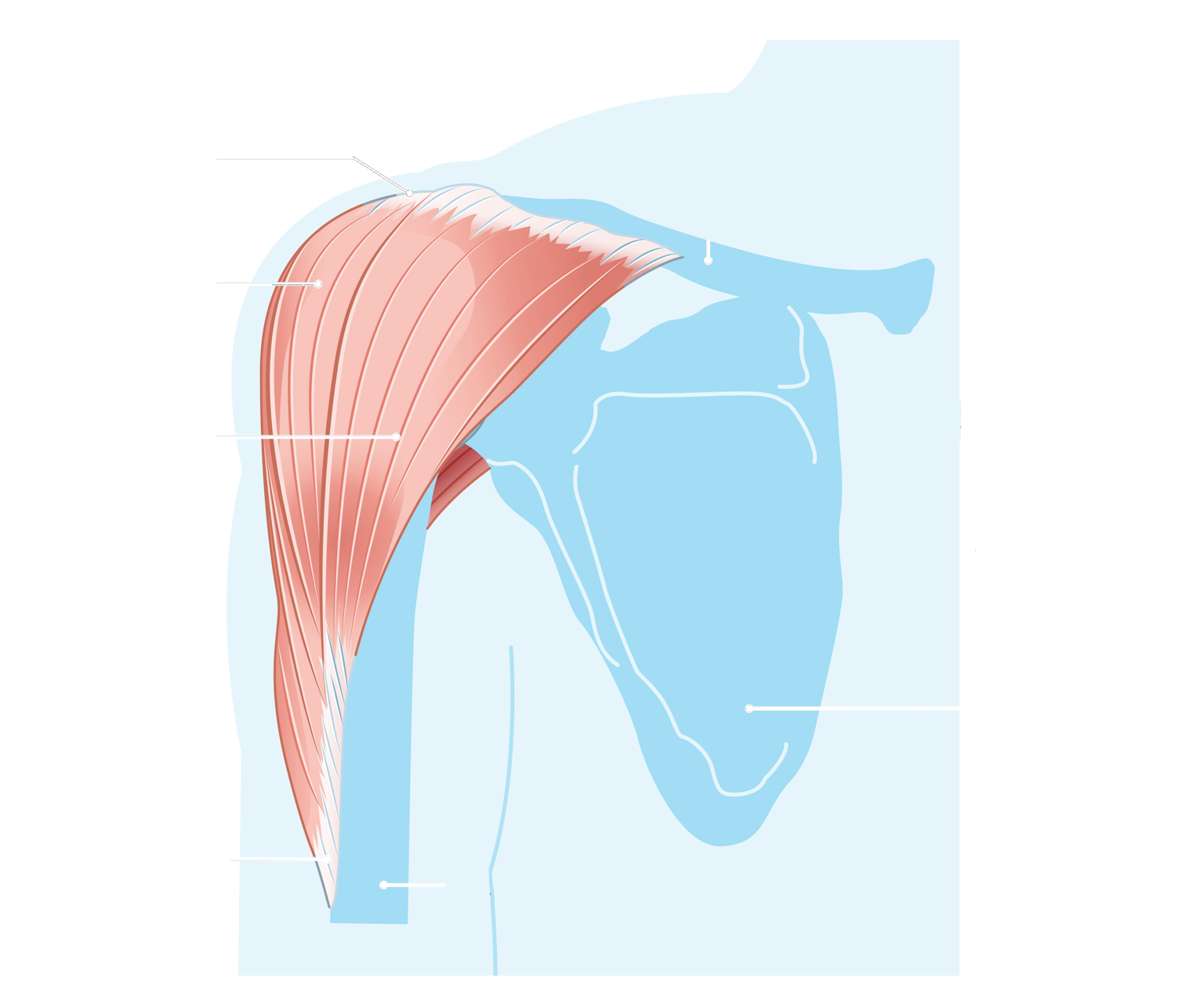
All variations of the front raise isolate and strengthen your anterior deltoids.
Dumbbell front raises
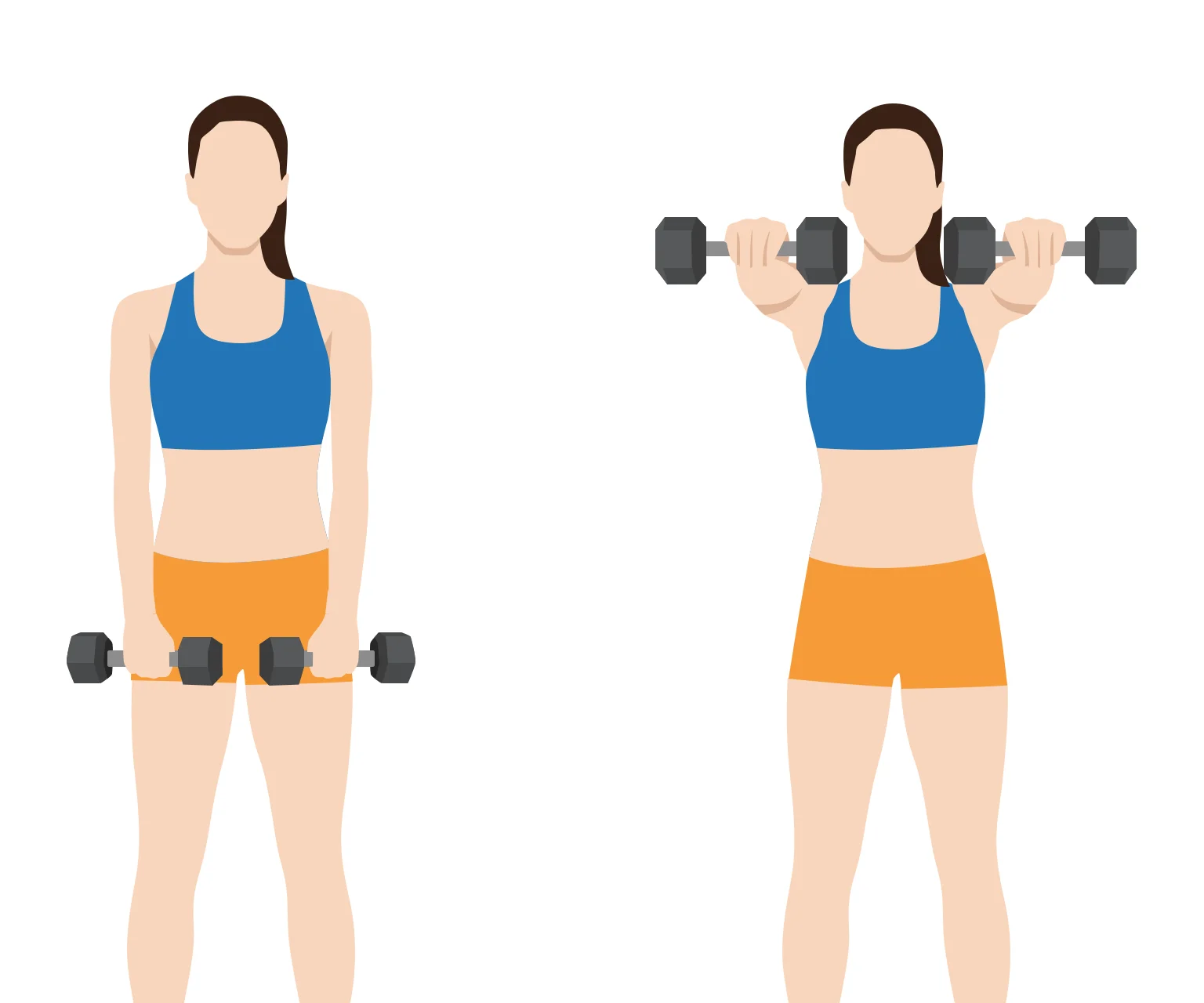
The front raise primarily targets your anterior (front) deltoids. These are the muscles located on the front of your shoulders. As with all free weight exercises, the use of dumbbells demands some balance and control throughout the movement.
Being an isolation exercise, front raises can help you develop and tone your shoulders in an effective and comprehensive way. That's why many shoulder days and push day workouts include the front raise, alongside lateral raises and rear delt exercises.
How to do
- Stand straight with your feet shoulder-width apart. Hold a dumbbell in each hand, with your palms facing towards you.
- Without swinging, slowly lift the dumbbells in front of you until your arms are parallel with the floor. Keep your back straight through the movement.
- Pause for a moment at the top of the movement.
- Finally, lower the dumbbells back to the starting position.
- Repeat for the desired number of reps.
Sets and reps
The recommended number of sets and reps for front raises usually ranges between 2-3 sets or 8-12 reps. This range is ideal for balancing strength and endurance.
It's critical to maintain proper form through the movement to prevent injury and ensure your targeted muscles are worked efficiently.
Single dumbbell front raises
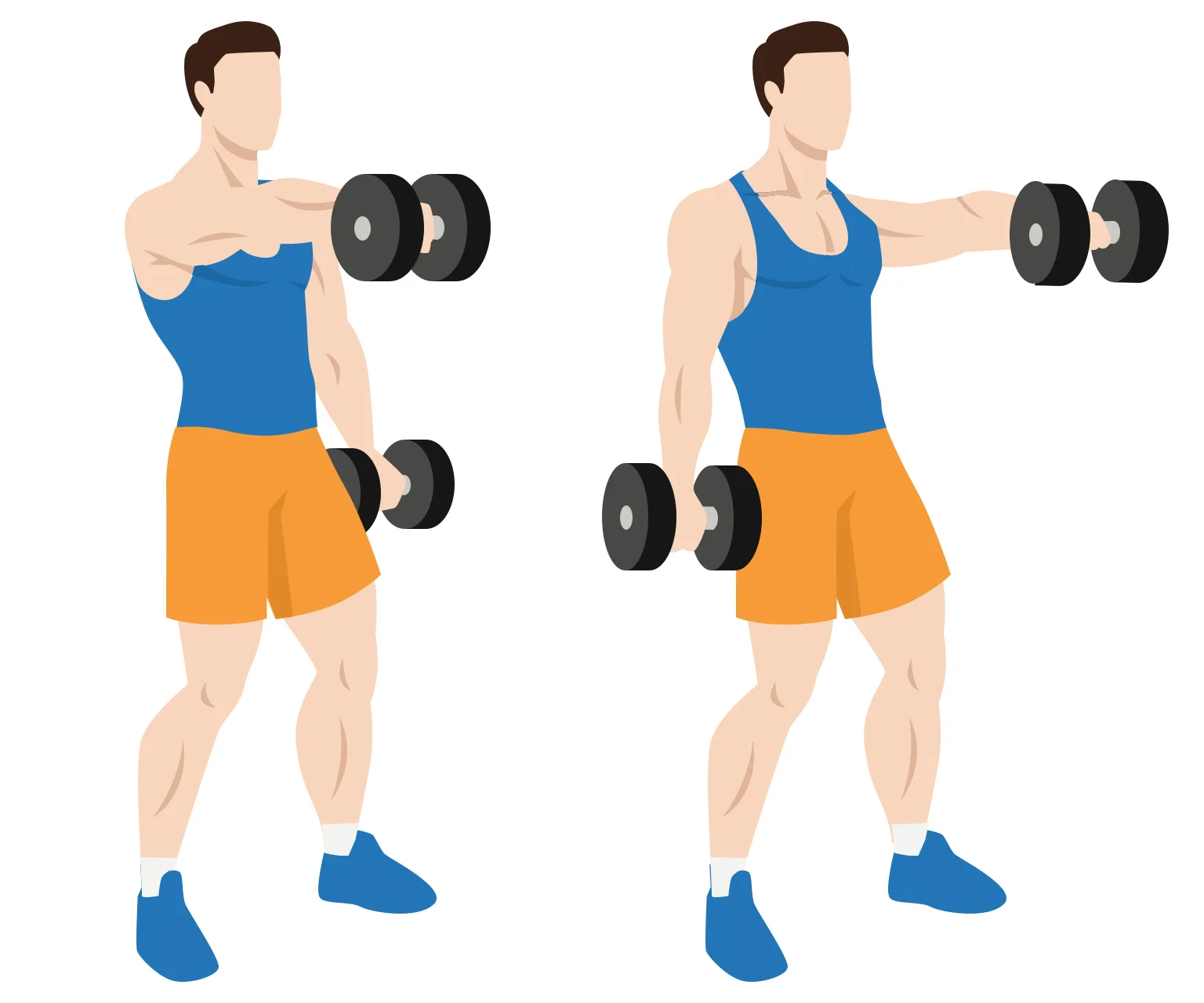
Instead of the traditional front raise where you raise both dumbbells at the same time, in this variation you raise one dumbbell at a time. This variation is as effective at working your front delts, but it also demands some engagement from your core and obliques to maintain balance.
How to do
- Stand tall with your feet shoulder-width apart. Hold a dumbbell in each hand, with your palms facing your body.
- Raise one dumbbell up in front of you until your arm is at shoulder height or slightly higher.
- Pause for a moment at the top of the movement.
- Finally, slowly lower the dumbbell back to the starting position.
- Repeat for your other arm and the desired number of reps.
Two-handed dumbbell front raises

In this variation, you hold a single dumbbell with both hands. This exercise is slightly easier to perform that working with two independent weights. It also requires less coordination and balance skill compared with traditional dumbbell front raises.
How to do
- Stand tall with your feet shoulder-width apart. Hold a dumbbell with both hands in front of your thighs.
- Slowly lift the dumbbell up to shoulder height until your arms are parallel with the floor.
- Hold for a moment at the top of the movement.
- Finally, slowly lower the weight back to the starting position.
- Repeat for the desired number of reps.
Seated front raises

With the seated front raise, your core is less engaged since the seat or bench provides stability. Although this might seem like a downside at first, it actually allows you to have a more targeted workout for your shoulders.
How to do
- Sit on a chair or the edge of a gym bench. Your feet should be planted flat on the floor.
- Hold a dumbbell in each hand with your palms facing towards you.
- Slowly raise the weights out in front of you until your arms are parallel with the floor.
- Pause for a moment at the top of the movement.
- Finally, slowly lower the weights back to the starting position.
- Repeat for the desired number of reps.
Cable front raises
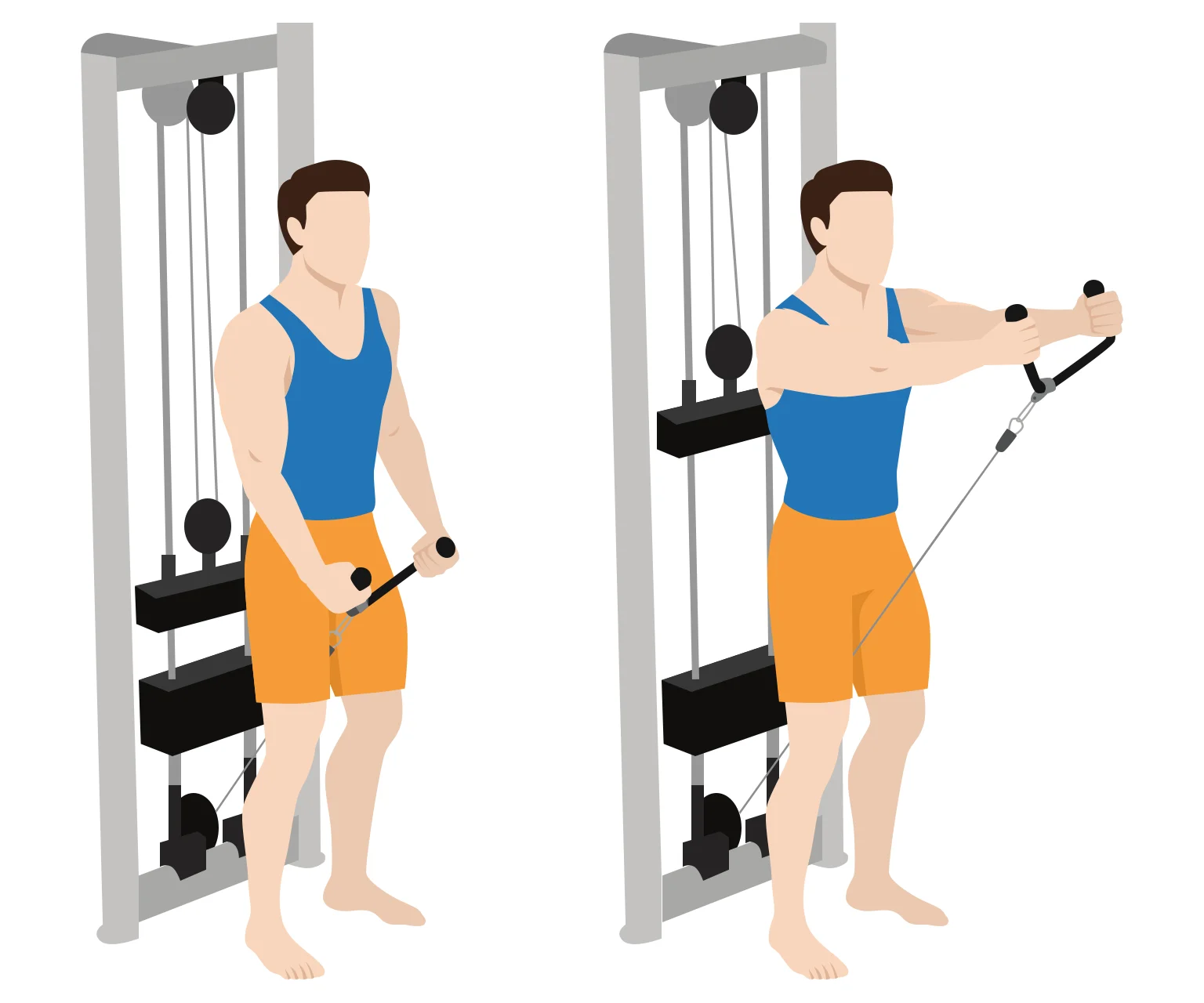
The use of a cable machine provides a constant tension through the entire front raise. By contrast, in dumbbell front raises the tension varies depending on the angle of your lift.
How to do
- Stand with your back facing a cable machine. Your feet should be shoulder-width apart.
- Hold the rope attachment with the cable between your legs.
- Slowly raise your arms in front of you until they are parallel with the floor. Keep your back straight and your core engaged.
- Pause for a moment at the top of the movement.
- Finally, slowly lower the rope handle back to the starting position.
- Repeat for the desired number of reps.
Single arm cable front raises
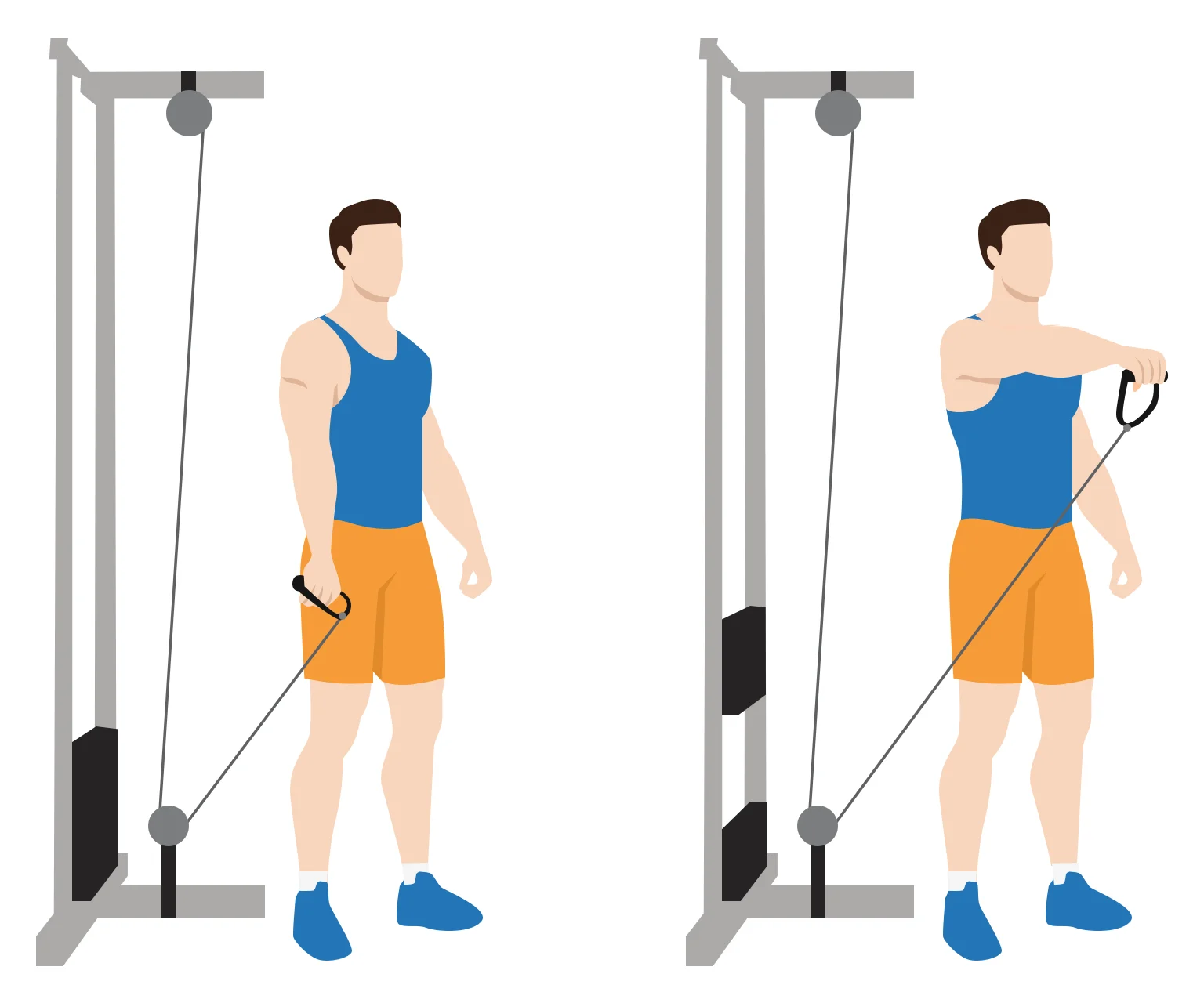
You can also do cable front raises with one arm at a time, if you prefer. This allows you to focus on each shoulder individually, which can help address muscular imbalances and enhance your overall shoulder development.
How to do
- Start next to a cable machine with your feet shoulder-width apart.
- Grab the handle with one hand with your palm facing towards your body.
- Slowly raise your arm in front of you until it is parallel with the floor.
- Pause for a moment at the top of the movement.
- Finally, slowly lower your arm back to the starting position.
- Repeat for the desired number of reps.
Front plate raises
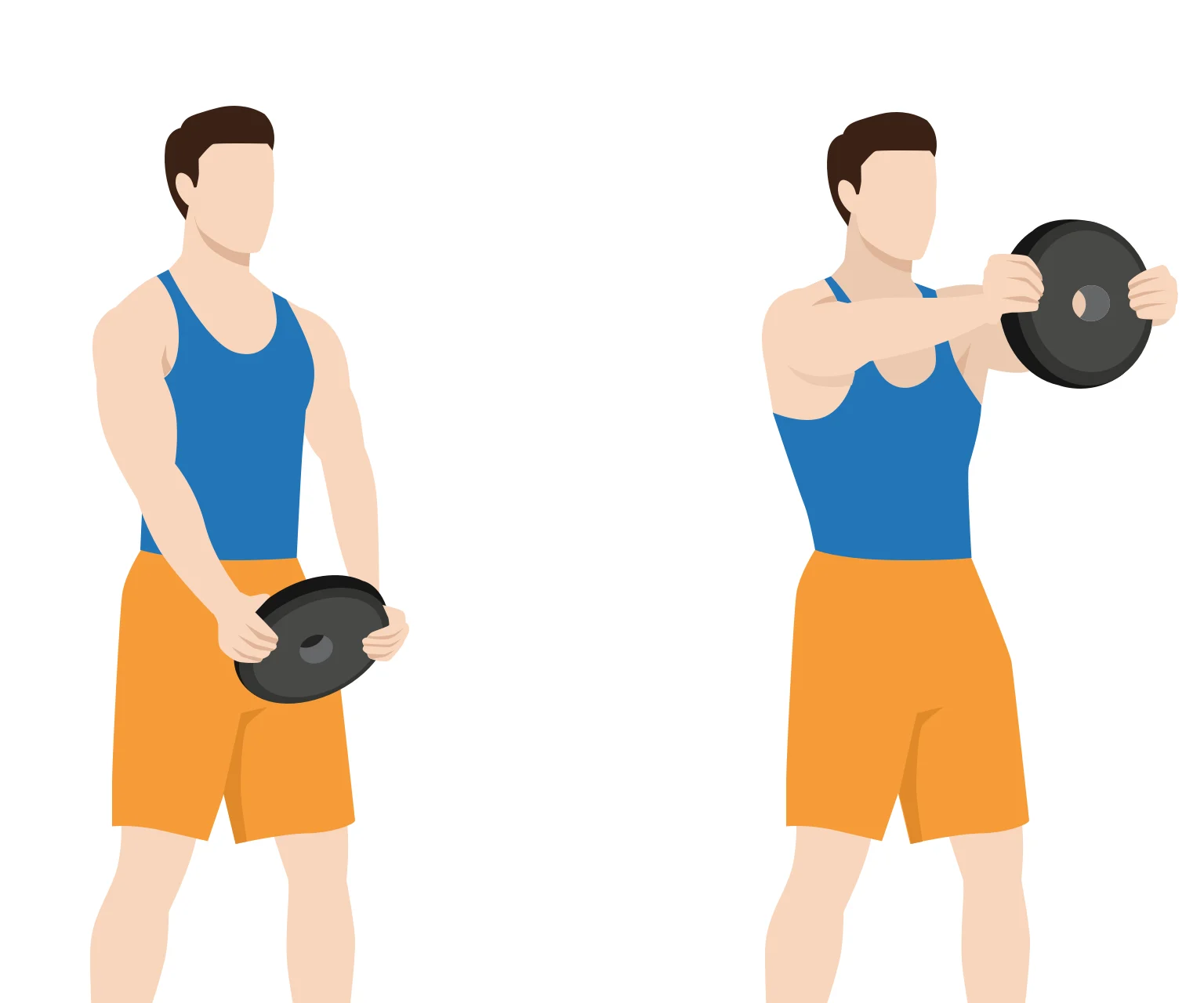
In this variation of the front raise, you hold a single weight plate with both hands. This is more challenging than holding a single dumbbell, requiring good grip strength.
How to do
- Stand upright with your feet shoulder-width apart.
- Hold a weight plate with both hands on opposite sides of the plate. Start by holding the plate at thigh level.
- Slowly raise the plate in front of you until your arms are parallel with the floor.
- Pause for a moment at the top of the movement.
- Finally, slowly lower the weight back to the starting position.
- Repeat for the desired number of reps.
Barbell front raises
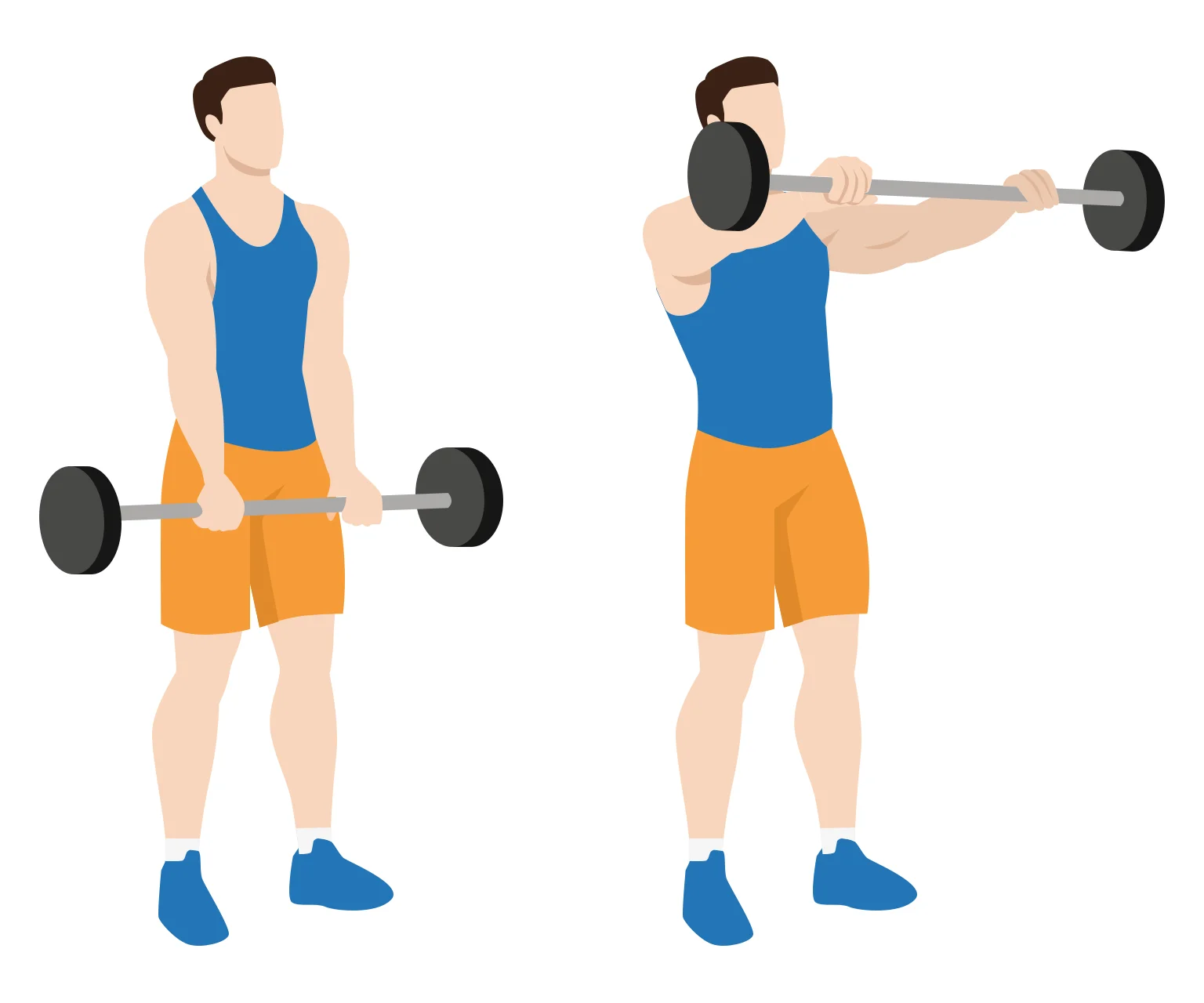
The use of a barbell provides a balanced load across your body, making it easier to lift heavier weights. Dumbbells, by contrast, provide a greater range of motion and allow for unilateral training (one side at a time).
How to do
- Stand upright with your feet shoulder-width apart.
- Hold the barbell at thigh level with an overhand grip. Your hands should be slightly wider than shoulder-width apart.
- Raise the barbell up to shoulder height, until your arms are parallel with the floor.
- Pause for a moment at the top of the movement.
- Finally, slowly lower the barbell back down to the starting position.
- Repeat for the desired number of reps.
Kettlebell front raises

Kettlebell front raises provide a unique challenge due to the design of the kettlebell. The weight of a kettlebell is not evenly distributed, so it demands more stability and engages your core muscles more effectively compared to dumbbell raises.
How to do
- Stand tall with your feet shoulder-width apart. Hold a kettlebell with both hands in front of your thighs.
- Slowly lift the kettlebell up to shoulder height until your arms are parallel with the floor.
- Hold for a moment at the top of the movement.
- Finally, slowly lower the weight back to the starting position.
- Repeat for the desired number of reps.
Resistance band front raises
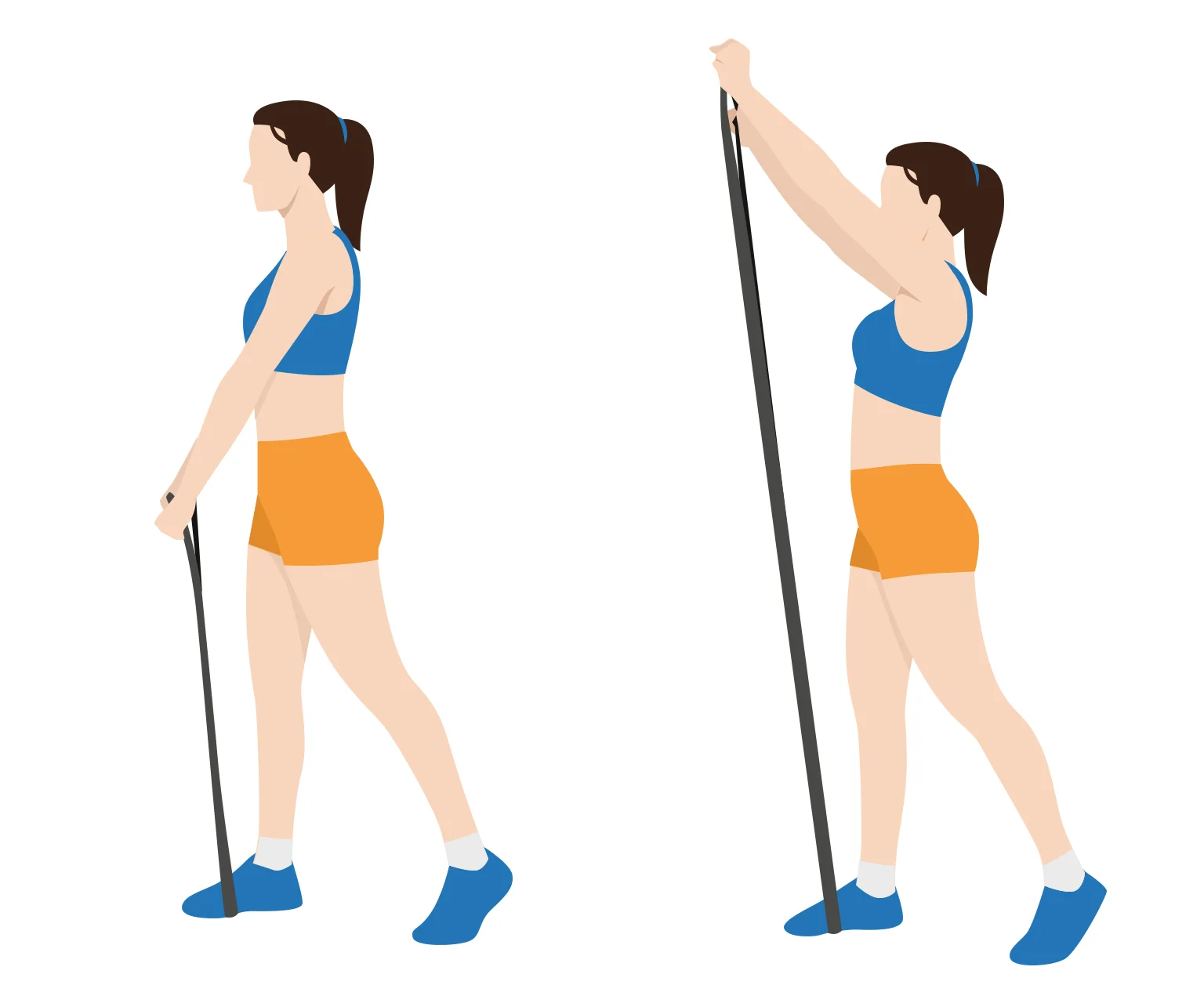
Resistance bands provide a unique type of tension through the entire range of motion. Unlike dumbbells or barbells, the resistance provided by a band increases as you raise into the movement. Resistance bands are also lightweight, portable and more versatile in terms of where and how they can be used.
How to do
- Stand with your feet shoulder-width apart, with one of both feet on the center of a resistance band.
- Hold the ends of the band with both bands. Your palms should be facing down (or each other).
- Raise up your arms until they are parallel to the floor. Ensure your keep your wrists straight.
- Pause for a moment at the top of the movement.
- Finally, slowly lower your arms back down to the starting position.
- Repeat for the desired number of reps.
Tips
Speed it up or slow it down
A simple way to modify the front raise is by changing the speed and tempo at which you perform the raises.
Slower raises will emphasize strength and endurance. Slow, controlled movements ensure your muscles are engaged through the entire range of motion, making the exercise more effective. Faster raises will instead enhance your power.
Regardless of how quickly you raise, it's important to stay in control of the weight. Don't let the weight drop too quickly.
